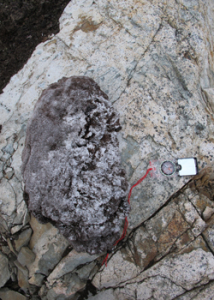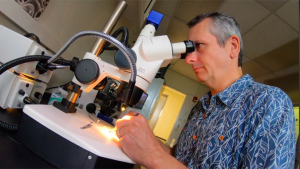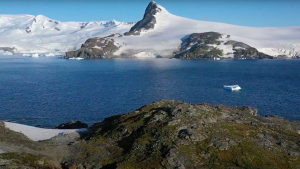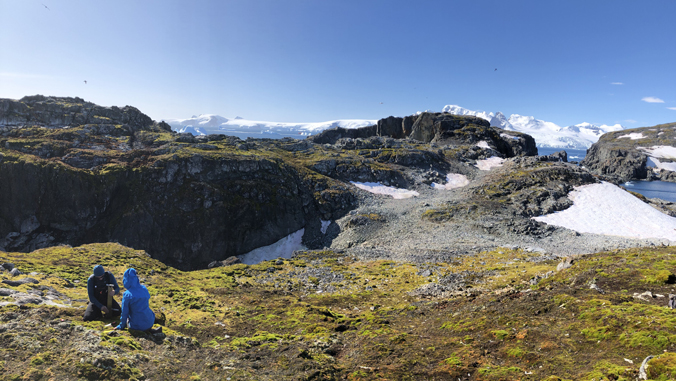As glaciers in Antarctica have melted, previously ice-entombed black mosses have been exposed. A team led by University of Hawaiʻi at Mānoa researchers conducted extensive analyses on these mosses discovered in the northern Antarctic Peninsula, which revealed sensitive glacier behavioral responses to the climate over the past 1,500 years.

The findings, published in the Geological Society of America journal Geology, the top-ranked publication in the field of geological sciences, provide a clearer picture of climate and ice history in the region.
The principal investigator on the project is David W. Beilman, professor and undergraduate chair of the Department of Geography and Environment in UH Mānoa’s College of Social Sciences.
“The Antarctic Peninsula is a high-biodiversity coastal ecosystem that is one of the richest breeding grounds for penguins, seals and seabirds in the continent. What happens there has global impact including the influence of sea-level rise as ice melts,” said Beilman. “There are great scientific models of glacial expansion and recession, but much less is known about what happens on the ground at sea level where ice, ocean and sensitive coastal life intersect. Our field research addresses this gap and improves our understanding of these ecosystems and the changes resulting from polar warming.”
Analyzing black mosses

Researchers collected dead black mosses along the edges of glaciers and nunataks—isolated rocky peaks projecting above ice or snow surfaces—at several locations in the northern Antarctic Peninsula. Mosses, one of the few types of plants found in Antarctica, are killed off when approaching glaciers cover them with ice.
Using radiocarbon dating, researchers were able to reconstruct an accurate timeline of when past glacial expansion occurred, and found evidence for three periods of glacial advance in the region over the past 1,500 years. The kill dates of the youngest dead plants were the same as the ages of many penguin remains, indicating that the most recent advance happened at the same time that several penguin breeding grounds were abandoned.
“What’s so valuable about these kill dates compared to other records (such as the ages of glacier erratics or penguin remains) is their accuracy,” said collaborator and research team member Dulcinea Groff from the Department of Geology and Geophysics at the University of Wyoming.
By analyzing the geospatial patterns of plant kill dates relative to the current glacier edge, the team determined the rate of glacier advances at multiple sites. They discovered that a glacier receding rapidly today also advanced faster in the past, suggesting dynamic “hotspots” of ice activity that impacted coastal life in the Antarctic Peninsula.
More solar energy absorbed

As glaciers retreat and the Antarctic’s ecosystem changes from reflective ice and snow to a terrain dominated by dark rocks and plants, increasing amounts of solar energy are being absorbed rather than reflected, contributing to glacial melt and global sea level rise. Knowing the location and rates of these hotspots of change is an important piece in the puzzle for researchers.
“Our research team was in Antarctica during a record-setting Antarctic heat wave summer that broke temperature records in the Peninsula region in 2020. Being there and collecting samples from receding ice margins during that warm summer brought home the urgency to better understand how this fragile, yet critically important region, is responding to rapid global climate change,” added Beilman.
Added geography and environment department alumnus Derek Ford, who participated in the research expedition as a graduate student, “This trip was an amazing opportunity to explore remote locations and make discoveries. As a geospatial data scientist, the research was rewarding, combining analysis of geographic patterns with tools like radiocarbon dating to better understand changes in the ice and its impacts.”


